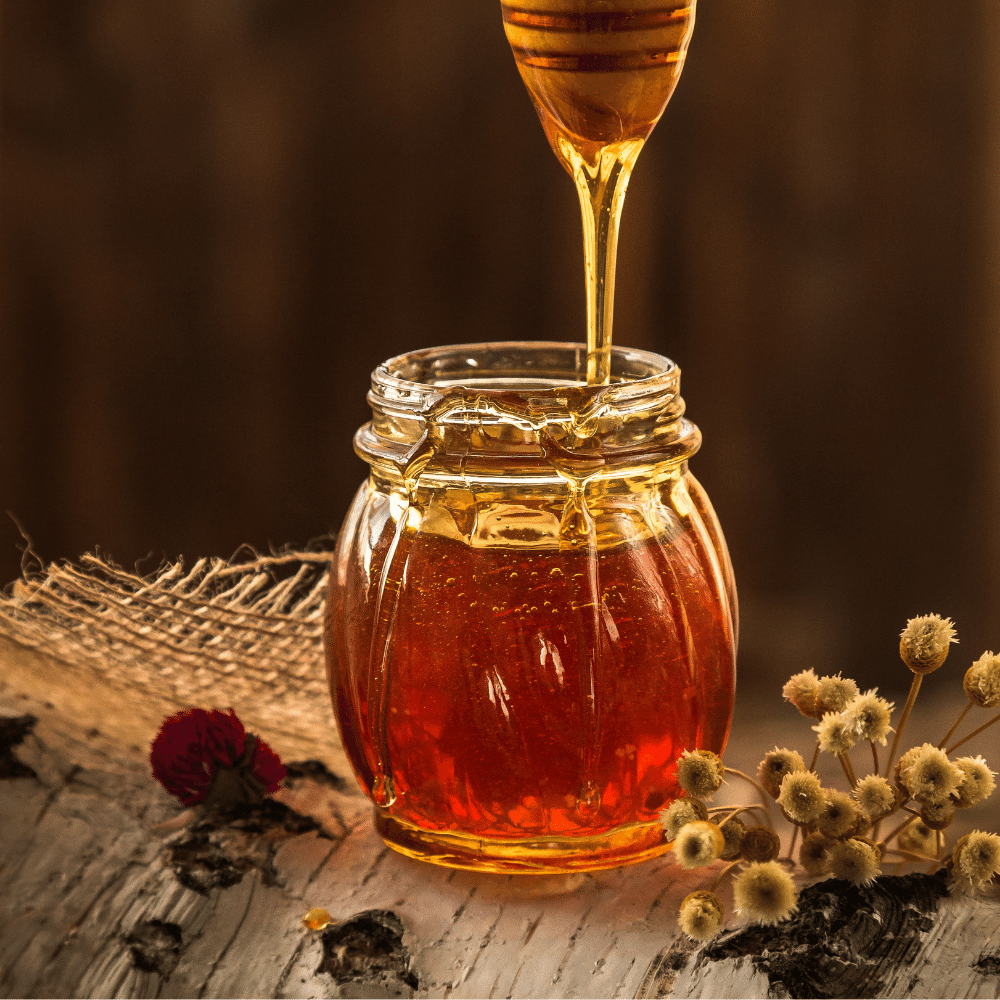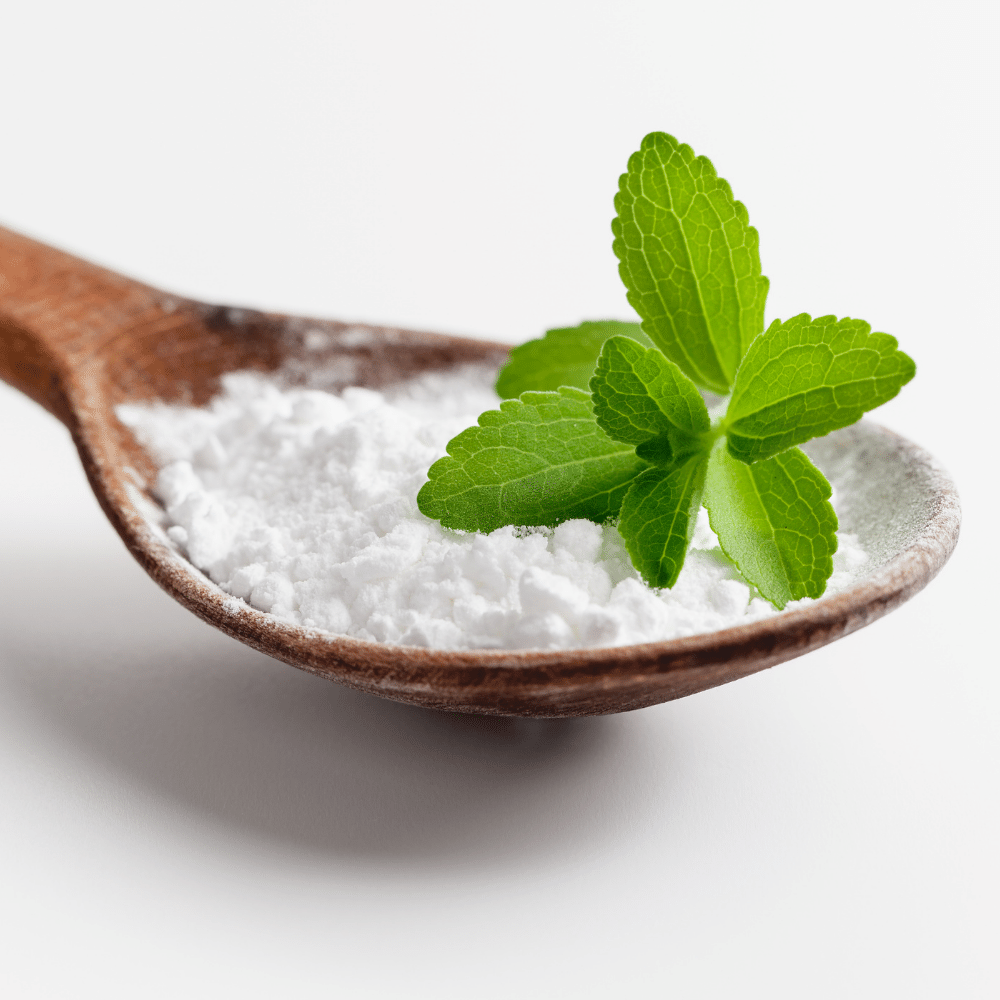Sugar has become an essential ingredient in our diets, but it can also be quite unhealthy.
In recent years, many people have started looking for healthier alternatives to granulated sugar.
If you’re one of them, then you’ve come to the right place!
In this article, I will discuss seven of the best substitutes for granulated sugar that are both healthy and delicious.
From maple syrup to honey and coconut sugar – each substitute offers its own unique flavor and texture.
And with a few simple adjustments, you can easily incorporate these ingredients into your favorite recipes.
So let’s get started!
What is Granulated Sugar?

Granulated sugar, also known as white or table sugar, is the most common type of refined sugar.
It is made from either beet or cane and comes in tiny granules that dissolve quickly when added to liquids.
Granulated sugar has a fine texture and slightly sweet taste making it perfect for baking cakes, cookies, pies and other sweet treats.
It can also be used for cooking savory dishes such as sauces and marinades.
Granulated sugar is often used as a topping on cereals, oatmeal and more to add sweetness without overpowering the flavor of the dish.
The 7 Best Substitutes For Granulated Sugar
Granulated sugar is a key ingredient in many recipes.
But if you don’t have it on hand or prefer not to use it, there are several alternatives that can still give you the sweet flavor and texture you’re looking for.
Here are seven substitutes for granulated sugar that will help make your treats just as delicious:
1 – Raw Honey

Raw honey is quickly becoming one of the most popular ingredients in cooking.
This is due to its health benefits and natural sweetness, picking up where granulated sugar can’t reach.
Raw honey contains high amounts of antioxidants and has antiviral abilities; it’s packed with vitamins, minerals, enzymes, and probiotics that are beneficial for gut health and immunity.
Raw honey also acts as a prebiotic; helping to feed good bacteria like Bifidobacterium found in your gut!
Most importantly though, it adds just the right amount of sweetness without all the refined sugars – so it’s an excellent choice if you’re looking for something healthier than granulated sugar.
Adding raw honey to recipes gives them a richer texture and flavor – great for baking or sauces – as rather than just providing sweetness like granulated sugars does, it can help to bring out more complex elements such as boldness or earthiness from other ingredients too!
2 – Maple Syrup

Maple syrup has been a popular ingredient in cooking for centuries, largely because of its intense flavor and versatility.
It is especially popular in baking and confectionery, as the sweet flavor can easily enhance any dessert.
Maple syrup can be used interchangeably with granulated sugar but there are certain recipes where it makes more sense to use maple syrup.
For example, if you’re making pancakes or waffles with a denser texture or deep-dish pies that need extra moisture, maple syrup would work better than granulated sugar since it adds moisture.
In fact, many traditional recipes from North America make use of maple syrup due to its ability to provide sweetness while adding depth and complexity to dishes.
3 – Molasses

Molasses is a thick, syrupy product made from either sugar cane or sugar beet juice.
Unlike granulated sugar which can influence certain chemicals in food and drinks, molasses adds an intense flavor with a hint of sweetness.
Molasses gives dishes unique color tones when baking, giving your treats that added depth without having to add additional ingredients or complexity.
It has a strong taste which brings the best out of seasonal fruits and vegetables you’re preparing in the kitchen.
When considering what kind of sweetener to use for your recipes, it makes sense to use molasses instead of granulated sugar because it contributes more robust flavors that help enhance other ingredients’ natural tastes rather than masking them like traditional granulated sugar does.
Additionally, this type of sweetener complements spices very well making for easily creative combinations when cooking!
4 – Brown Sugar

Brown sugar is a pantry staple that adds flavor and texture to all types of dishes.
Its popularity largely stems from its undeniably irresistible taste!
Its main appealing factor is that its molasses content gives it a full-bodied sweetness, unlike any other sugar.
This richness works especially well in baked goods, desserts, marinades and glaze — adding an extra depth of flavor to whatever you’re cooking or making.
You can also use brown sugar as a topping for so many things like pancakes, waffles and porridge.
In terms of when to use brown sugar instead of granulated sugar: brown sugar provides more moisture than white granulated since the former contains around 2-3% water.
This makes it ideal for recipes that need moistness – such as applesauce bars, cream pies, gingerbread cookies and cupcakes.
When using this type of suger in recipes like these you don’t have to add additional liquids as with cultivated white sugars.
5 – Coconut Sugar

Coconut sugar is becoming increasingly popular in cooking due to its unique, subtle sweetness.
This ingredient has a much lower glycemic index than regular granulated sugar, meaning it won’t spike your blood sugar quite as high or as quickly.
However, the main reason coconut sugar is so popular in cooking is because of its flavor – warmer and more complex than all-purpose granulated sugars that are available.
Coconut sugar also comes with hints of caramel flavor which helps give baking recipes a rich taste and texture.
It makes sense to use coconut sugar when you want a milder sweetness over date or darker-colored dishes or drinks such as pies, hot chocolate, teas and smoothies.
The caramel notes can also elevate sauces without adding too much sweetener so it would be great for topping off dishes like roasts or grilled meats!
6 – Stevia

Stevia is an incredibly popular sweetener widely used in cooking.
It’s unique in that it has a zero glycemic index and doesn’t cause spikes or drops in blood sugar levels like other sweeteners, such as granulated sugar.
Because of this, many people have embraced stevia as one of the best alternatives to traditional refined sugars.
It’s also very versatile in cooking; you can use it for baking just like with regular sugar, but its flavor profile makes it especially suited for sweets like pies and cookies!
In these recipes, it can make the desserts taste much more indulgent than they truly are.
With this benefit in mind, someone trying to eat healthier or reduce their overall sugar intake without compromising on flavors could opt for stevia instead of granulated sugar as either part or all of their sweetening needs.
7 – Date Sugar

Date sugar, also known as date powder, is quickly becoming a popular ingredient in cooking for its unique flavor and natural sweetness.
This form of sugar comes from the dried ground-up dates – it still keeps the same nutritional qualities when compared to regular granulated version while providing an interesting sweet complexity to whatever dish you’re making.
When choosing between using date sugar or regular granulated sugar in your dishes, it usually will come down to the desired flavor profile.
Date sugar’s subtle notes of caramel pairs nicely with seasonal fall desserts like pies and crumble.
It can also be used in drinks too like smoothies or lattes where its slightly smoky taste provides excellent character combinations with other ingredients.
Its fine consistency makes it easier than ever to add into recipes without changes made to either timing or ingredients.
If you’re looking for a slight change-up in taste that won’t alter the outcome of your recipe – then try switching out granulated for some date sugar!
FAQ
What can I use instead of granulated sugar in baking?
When it comes to baking, granulated sugar is usually the go-to sweetener.
However, there are alternatives available that can provide just as much sweetness but under a different form.
Brown sugar is one of the most common alternatives for baking and works especially well when you’re looking for a soft and fluffy texture like in cookies or cakes.
Brown sugar has molasses mixed into it which gives it some natural moisture and a slightly deeper flavor than regular table sugar.
You can also use maple syrup instead of granulated sugars in many recipes – just reduce the amount of liquid by at least three tablespoons and add an extra ¼ teaspoon of baking soda per cup of syrup added in order to help with the rise during baking time.
Powdered (confectioner’s) sugars are great too; they dissolve quickly and make cakes very tender compared to all-purpose flour alone, while also adding subtle sweetness rather than strong sugary taste that white/granulated sugars do.
What is the same as granulated sugar?
Granulated sugar, or white table sugar, can be replaced with several other forms of sugars.
These include caster sugar (which is finer than ordinary granulated) and icing sugar or powdered sugar (which are both much finer than granulated).
You can also use finely crushed candy or dissolve cubes of honeycomb in water as viable alternatives to granulated white table sugar.
Raw and organic cane sugars have a slightly different flavor from regular granulated but are still an acceptable replacement for baking applications.
Substituting light brown and dark brown soft sugars for Granulated is also possible when baking goods that require caramelization can lend depth of flavor to the finished dish.
Can I substitute brown sugar for granulated sugar?
Yes, you can substitute brown sugar for granulated white sugar in many recipes.
The biggest difference between the two sugars is the moisture content; brown sugar has more moisture than standard white granulated sugar.
Therefore it’s important to adjust the amount of liquid and other ingredients when substituting with brown sugar, as this will affect flavor, texture, and sweetness levels.
When using brown sugar instead of granulated white sugar in cookies or cakes for example, you may find that after baking your treats don’t hold their shape as well because more liquid has been added (or retained).
Conversely, crunchier desserts like crumbles won’t need additional liquid adjustments etc., but they will be slightly sweeter due to extra molasses content found in the dark-brown variety.

The 7 Best Substitutes For Granulated Sugar
Ingredients
- Raw Honey
- Maple Syrup
- Molasses
- Brown Sugar
- Coconut Sugar
- Stevia
- Date Sugar
Instructions
- Pick your favorite substitute from the list above.
- Follow cooking directions for your selected substitute with the proper ratio of ingredients.
Hi, I'm Benjamin. I love cooking, long walks, and my girlfriend! Here you’ll find simple and delicious recipes that you can make in 30 minutes or less.

